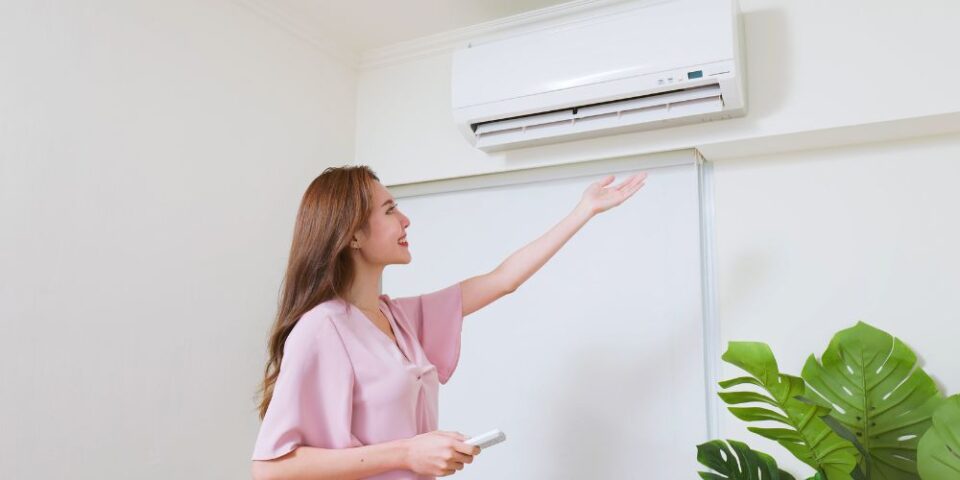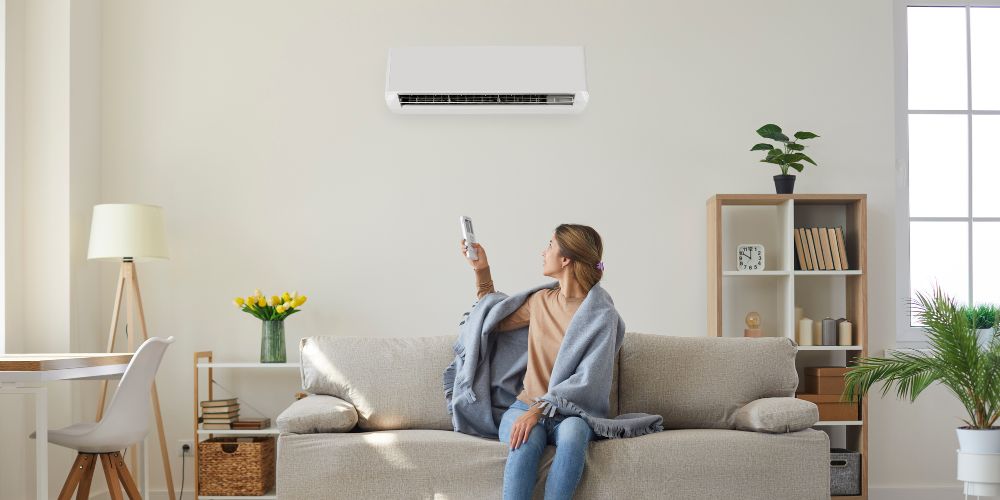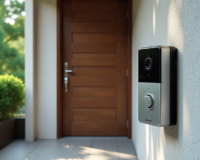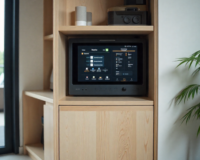Melbourne, known for its unpredictable weather, demands versatile heating and cooling solutions to maintain comfort throughout the year. With temperatures ranging from the high 30s (Celsius) in summer to below 0°C in winter, finding an efficient and effective system is crucial. This article explores the best heating and cooling systems suitable for Melbourne’s climate, considering factors such as energy efficiency, cost, environmental impact, and performance.
Understanding Melbourne’s Climate
Melbourne’s climate is characterized by a temperate oceanic pattern, which includes hot summers, cold winters, and significant temperature variations within a single day. The city’s weather can change rapidly, making it essential for heating and cooling systems to be adaptable and reliable.
The Best Heating and Cooling Systems for Melbourne’s Climate
Ducted Reverse Cycle Air Conditioning
Ducted reverse cycle air conditioning is widely considered the best option for Melbourne’s climate due to its ability to provide both heating and cooling in a single system. These systems use electrically powered heat pump technology to transfer heat between the indoor and outdoor environments, making them versatile and efficient.
How Ducted Reverse Cycle Systems Work
These systems consist of an outdoor unit connected to a network of ducts installed throughout the house. The heat pump technology enables the system to absorb heat from the outside air and transfer it indoors for heating during the winter. Conversely, in the summer, it extracts heat from the indoor air and expels it outside, providing cooling.
Advantages of Ducted Reverse Cycle Air Conditioning
- Dual Functionality: Offers both heating and cooling, eliminating the need for separate systems.
- Energy Efficiency: Modern units are highly efficient, particularly with inverter technology that adjusts the compressor speed to maintain the desired temperature.
- Cost-Effective: Lower running costs compared to having separate heating and cooling systems.
- Zoning Capabilities: Allows you to divide your property into separate sections for independent climate control, improving comfort and energy efficiency.
- Adaptable to Melbourne’s Climate: Can easily handle Melbourne’s unpredictable weather patterns.
- Environmental Impact: Produces fewer greenhouse gas emissions compared to traditional systems, especially when paired with renewable energy sources.
Disadvantages
- Initial Cost: Can be expensive to purchase and install, though this is offset by lower running costs over time.
- Performance in Extreme Cold: Less effective in extreme cold conditions, potentially requiring a supplementary heating system.
Why We Love Ducted Reverse Cycle Air Conditioning for Melbourne
- Comprehensive Climate Control: Provides a whole-home solution for both heating and cooling needs.
- Energy Efficiency: As per the Australian Government’s “Your Home” website, reverse cycle units are the most energy-efficient air conditioners and heaters available.
- Environmental Benefits: Even with lower energy ratings, these systems often boast lower running costs and fewer greenhouse gas emissions compared to other systems.
Highwall Split Systems

Highwall split systems are another popular option in Melbourne due to their compact size, ease of installation, and affordability. These units consist of an indoor unit mounted on a wall and an outdoor unit connected by refrigerant piping.
Benefits of Split Systems
Split systems are versatile and can be used in various parts of the house, such as bedrooms, living rooms, home offices, and studios. They can also be reverse cycle, providing both heating and cooling.
Advantages
- Versatility: Suitable for a range of property types, from units to family homes.
- Multi-Split Capabilities: You can run multiple indoor units using just one outdoor unit.
- Easy Installation: Simpler and less invasive to install compared to ducted systems.
- Affordable: Generally cheaper to install and run than central systems.
Disadvantages
- Limited Coverage: One unit typically covers a single room, so multiple units might be needed for a whole house.
- Aesthetic Impact: Wall-mounted units may not suit all interior designs.
Evaporative Cooling
Evaporative cooling is a natural and eco-friendly solution that uses water evaporation to cool the air. This method is especially effective in dry climates like Melbourne’s.
How Evaporative Cooling Works
Evaporative cooling systems draw outdoor air over water-cooled pads, causing the air to absorb water vapor and cool down. These systems are typically ducted, spreading the cool air throughout the home.
Advantages
- Ideal for Dryer Climate: Perfect for Melbourne’s typically dry summers.
- Eco-Friendly: Uses a natural cooling process without harmful refrigerants.
- Cost-Effective: Lower running costs compared to many conventional ACs.
- Fresh Air Supply: Constantly introduces fresh air into the home, improving air quality.
Disadvantages
- Humidity Dependence: Less effective on humid days, which can occasionally occur in Melbourne.
- Cooling Only: Does not provide heating, requiring a separate heating system.
- Water Usage: Requires a consistent water supply, which can be a concern during droughts.
Ducted Refrigerated Air Conditioning
Ducted refrigerated air conditioning systems use refrigerant gas to absorb heat from inside your home and expel it outdoors, providing efficient cooling regardless of outdoor conditions.
Benefits of Ducted Refrigerated Air Conditioning
These systems are known for their powerful and precise cooling capabilities. They are typically used in whole-home applications, with air distributed through a network of ducts.
Advantages
- Effective Cooling: Works well even on Melbourne’s more humid days.
- Allergy-Friendly: Doors and windows remain closed, which helps those with seasonal allergies.
- Precise Control: Offers whole-home temperature control with a smart thermostat.
Disadvantages
- High Installation Cost: The initial cost can be significant due to the complexity of duct installation.
- Running Costs: Can be expensive to run, especially during peak summer months.
- Cooling Only: Does not provide heating, so a separate heating system is needed.
Ducted Gas Heating
Ducted gas heating involves a central heater connected to a series of ducts throughout the house, providing consistent warmth.
Why We Still Love Gas Ducted Heating
Gas heating is known for its comfortable and natural-feeling warmth. Although the shift towards more sustainable energy sources is influencing many to consider electric alternatives, gas heating remains a viable option for many homeowners.
Advantages
- Comfortable Warmth: Provides a cozy and natural-feeling warmth.
- Rapid Heating: Gas heaters warm up quickly, providing almost instant comfort.
- Compatible with Add-On Cooling: You can install add-on refrigerated cooling to get both heating and cooling from the same ducts.
- Reduced Environmental Impact: Using natural gas can be more environmentally friendly compared to older, less efficient systems.
Disadvantages
- High Installation Cost: The initial cost can be significant due to the complexity of duct installation.
- Running Costs: While efficient, running costs can be higher compared to electric systems, depending on gas prices.
- Future Considerations: The shift towards renewable energy sources may reduce the appeal of gas heating over time.
Emerging Technologies
Solar Heating and Cooling
Solar systems use solar panels to generate energy, which can be used for both heating and cooling.
Advantages
- Sustainability: Reduces reliance on fossil fuels and lowers carbon footprint.
- Cost Savings: Potentially significant savings on energy bills over time.
- Government Incentives: Availability of rebates and incentives for installing solar systems.
Disadvantages
- Initial Cost: High upfront cost for solar panels and related equipment.
- Weather Dependence: Performance can vary depending on sunlight availability.
Geothermal Heating and Cooling
Geothermal systems use the stable temperatures underground to heat and cool homes.
Advantages
- Energy Efficiency: Extremely efficient, with low operating costs.
- Environmental Impact: Uses renewable energy from the ground, reducing carbon footprint.
- Longevity: Systems have a long lifespan with minimal maintenance.
Disadvantages
- Installation Cost: High initial cost due to the need for extensive ground works.
- Feasibility: Not suitable for all properties, especially those with limited land space.
Considerations for Choosing a System
Energy Efficiency
Choosing an energy-efficient system is crucial for reducing both environmental impact and operating costs. Look for systems with high energy star ratings and consider the long-term savings on energy bills.
Installation and Running Costs
While some systems have lower initial costs, their running costs might be higher. It’s essential to balance the upfront investment with long-term operating expenses to find the most cost-effective solution.
Environmental Impact
With growing environmental concerns, opting for systems with lower carbon footprints and those that use renewable energy sources is becoming increasingly important. Solar and geothermal systems, for instance, are excellent choices for eco-conscious homeowners.
Comfort and Performance
The system’s ability to maintain a comfortable temperature throughout the year is vital. Consider the system’s performance in both extreme heat and cold, and choose one that can handle Melbourne’s variable climate efficiently.
Space and Aesthetic Considerations
The available space and the desired aesthetics of your home can also influence your choice. Some systems require more space for installation and might impact the home’s appearance.
Conclusion
Choosing the best heating and cooling system for Melbourne’s unique climate involves careful consideration of various factors, including energy efficiency, cost, environmental impact, and performance. Reverse cycle air conditioning stands out as the most versatile and efficient option, offering both heating and cooling in one system. Split systems provide a flexible and affordable alternative for individual rooms, while evaporative cooling is an eco-friendly choice ideal for Melbourne’s dry summers. Ducted refrigerated air conditioning and gas heating offer powerful solutions for whole-home comfort, each with their own set of advantages.
For those looking towards the future, emerging technologies like solar and geothermal systems present sustainable and cost-effective alternatives that align with the global shift towards renewable energy. Ultimately, the best system for your home will depend on your specific needs, budget, and environmental goals. Consulting with HVAC professionals will ensure you choose the most suitable and efficient system to keep your home comfortable year-round in Melbourne’s ever-changing climate.






